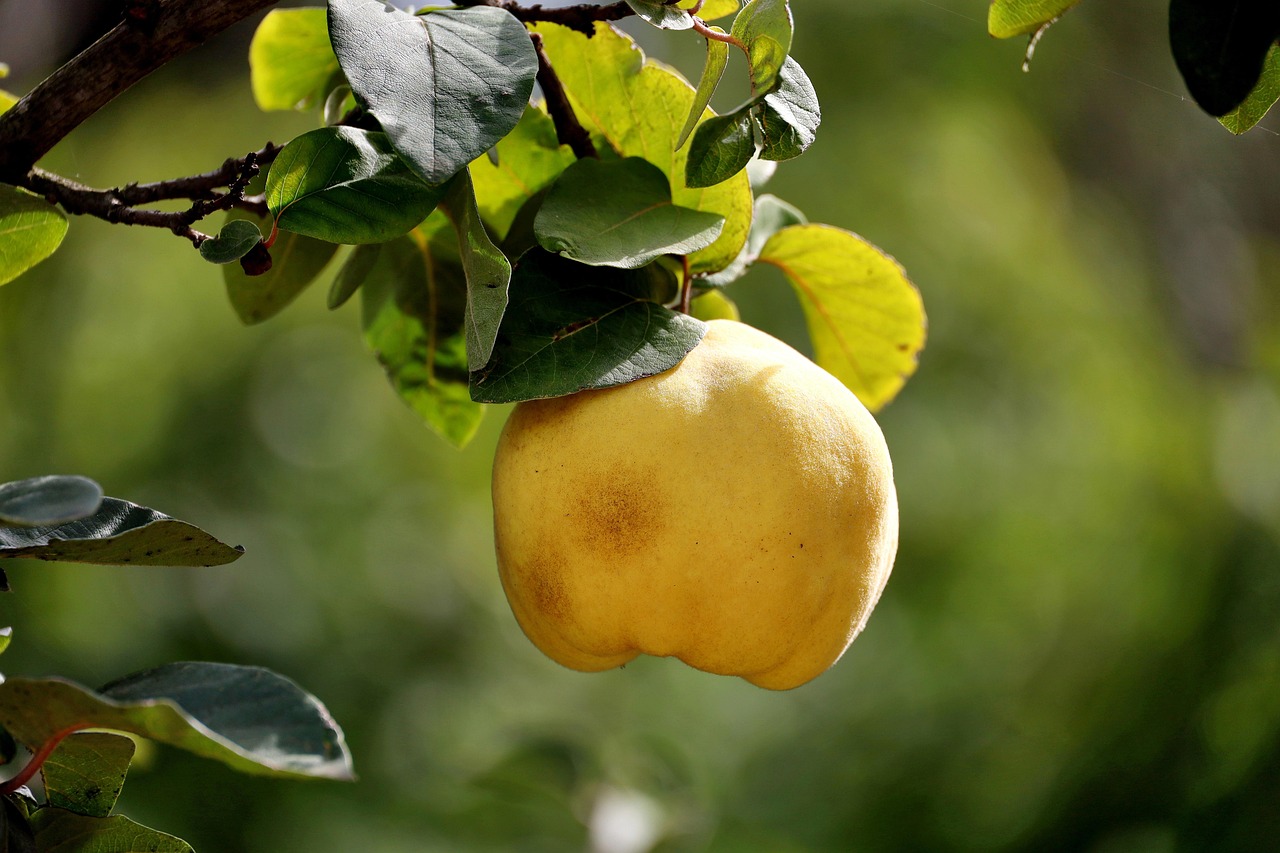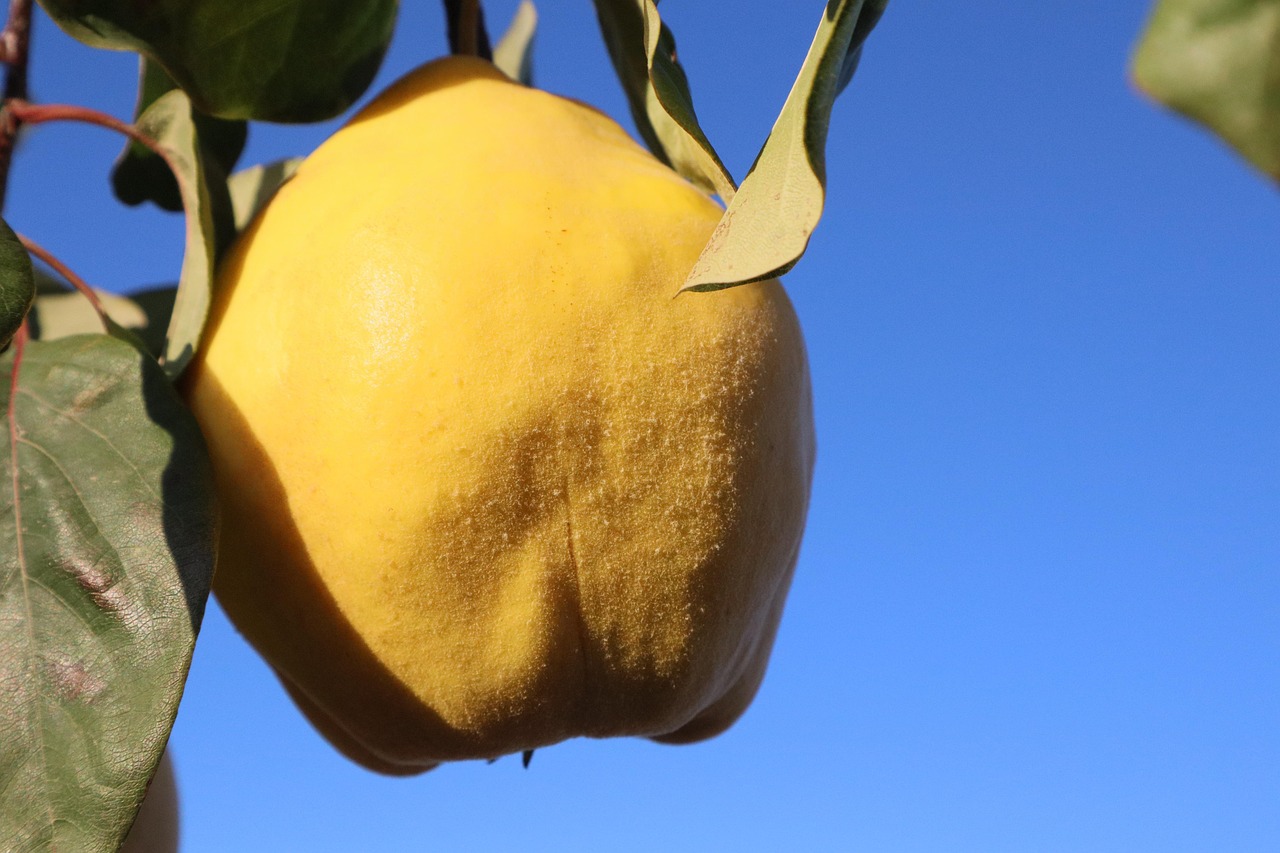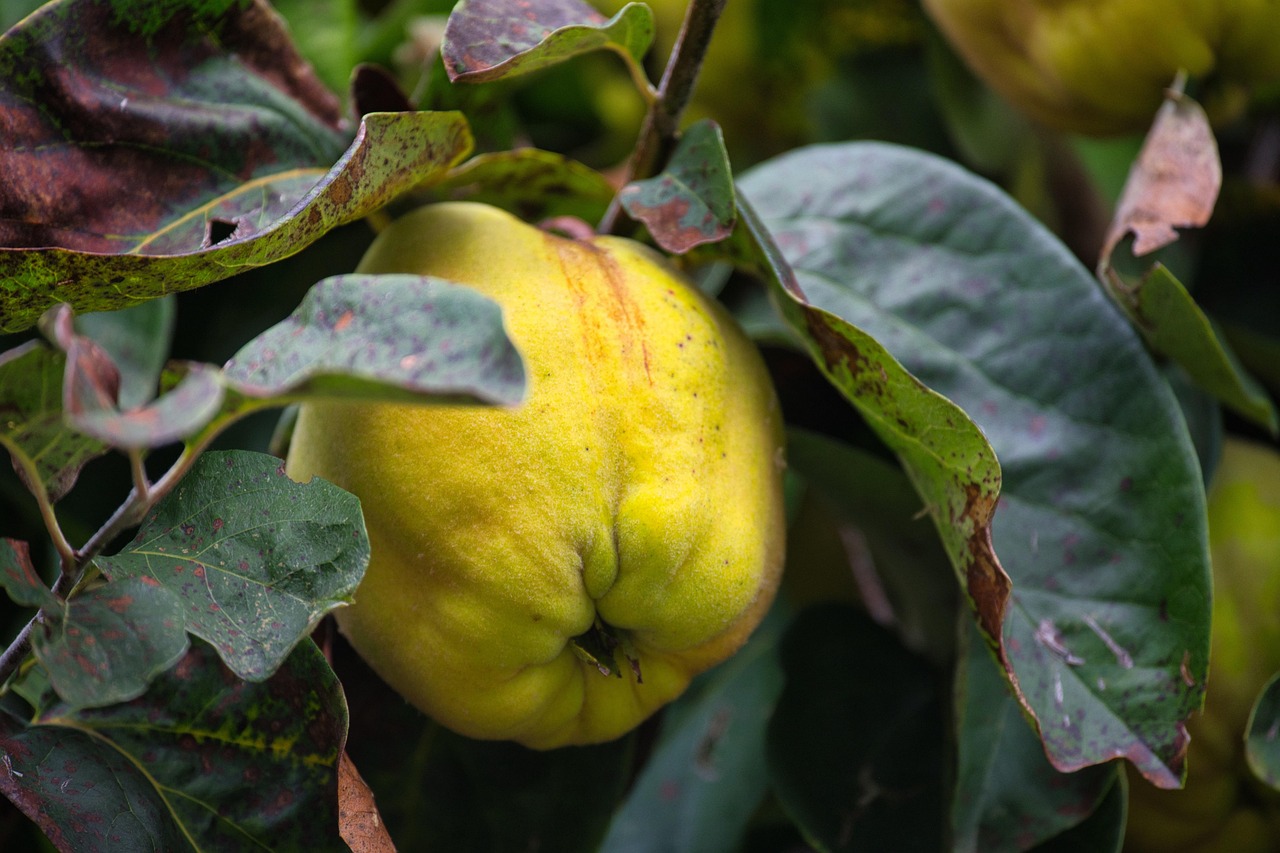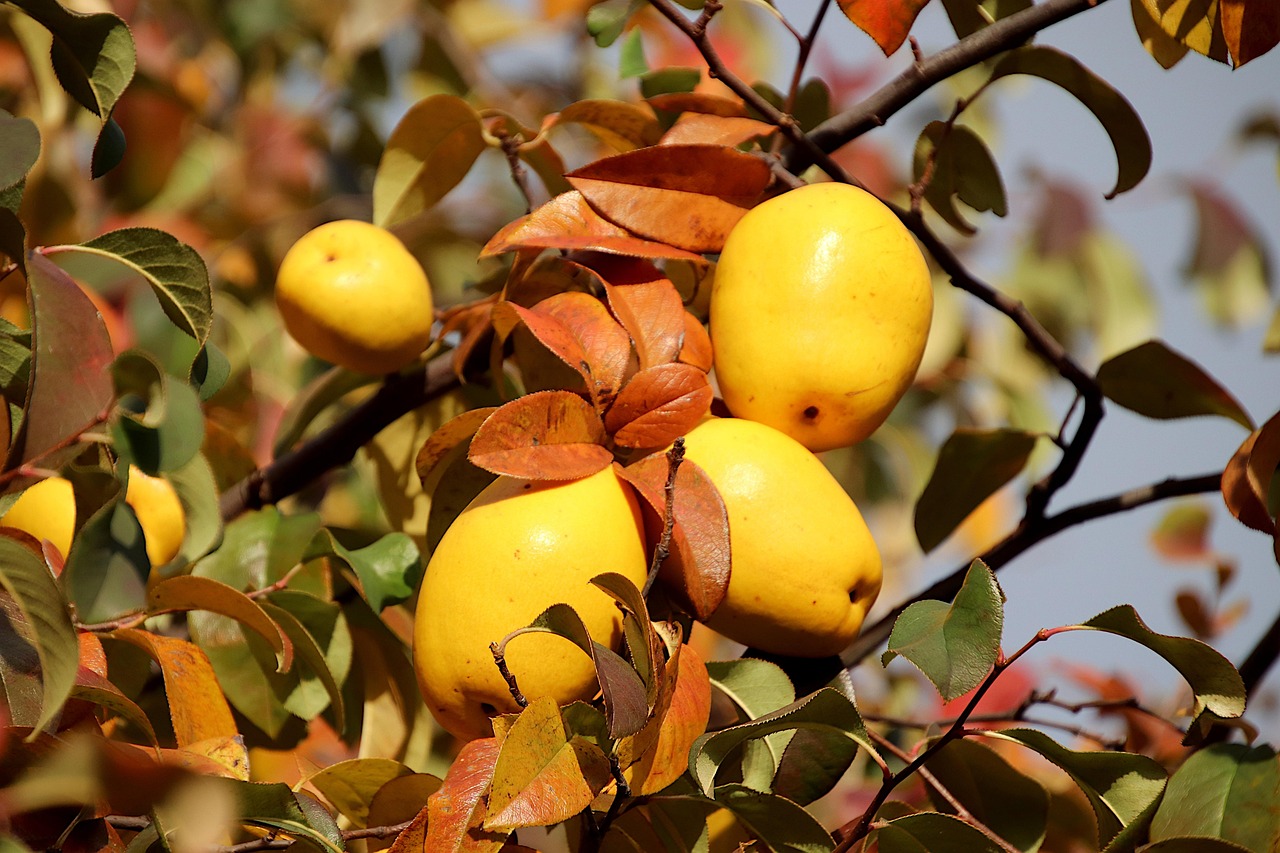Quince trees typically grow at a moderate rate, reaching about 12 to 24 inches per year under optimal conditions. Their growth can be influenced by factors such as soil quality, climate, and care provided.
Understanding Quince Trees
The quince tree, known scientifically as Cydonia oblonga, is a deciduous fruit tree prized for its flavorful fruit and fragrant blossoms. This tree is native to the Mediterranean region but has gained popularity worldwide for its versatility in culinary applications. Quince fruit is often used in jams, jellies, and desserts due to its high pectin content.

Quince trees can be an excellent addition to culinary fruit gardens. They offer not only unique flavors but also stunning ornamental features throughout the growing season. Understanding their growth rate is essential for gardeners aiming to cultivate this tree successfully. Factors such as climate, soil type, and care practices can all impact how quickly a quince tree grows.
Growth Rate Factors
Several factors influence the growth rate of quince trees. Here are some key elements that contribute to their development:
- Soil Quality: Quince trees thrive in well-drained, fertile soils. Nutrient-rich soil promotes faster growth.
- Climate: Quince trees prefer temperate climates with warm summers and cool winters. Extreme temperatures can stunt growth.
- Watering: Adequate watering is crucial, especially during dry spells. However, overwatering can lead to root rot.
- Pruning: Regular pruning encourages healthy growth and can lead to increased fruit production.
- Pest Management: Protecting the tree from pests and diseases ensures it remains healthy and grows optimally.
Growth Stages of Quince Trees
Quince trees go through distinct growth stages that can help gardeners understand their development better. Here are the primary stages:

- Seedling Stage: This initial stage lasts about 1-2 years. Growth is slow as the tree establishes its root system.
- Juvenile Stage: From 2 to 5 years, the tree begins to grow more rapidly, producing leaves and branches.
- Mature Stage: After about 5 years, quince trees reach maturity. Growth slows down, but they start producing fruit.
Optimal Conditions for Growth
To achieve the best growth rates for quince trees in a culinary fruit garden, consider the following optimal conditions:
| Condition | Optimal Range |
|---|---|
| Soil pH | 6.0 – 7.0 |
| Sunlight | Full sun (6-8 hours daily) |
| Water | 1 inch per week (during growing season) |
| Fertilization | Balanced fertilizer in early spring |
By providing these optimal conditions, gardeners can help ensure that their quince trees thrive and grow at a healthy rate. With proper care and attention, quince trees can become a valuable asset in any culinary fruit garden, offering bountiful harvests and beautiful blooms.
Pests and Diseases Impacting Growth
Pests and diseases can significantly affect the growth of quince trees. Common issues include:

- Codling Moth: This pest can damage developing fruit, leading to poor harvests.
- Pear Psylla: This insect feeds on sap and can weaken the tree.
- Crown Gall: A bacterial disease that causes galls on roots and stems, hindering growth.
Monitoring for these problems and implementing integrated pest management strategies can help maintain healthy growth rates for quince trees.
Ideal Planting Techniques for Quince Trees
Planting quince trees correctly is crucial for their growth and productivity. The right techniques ensure that the tree establishes a strong root system and thrives in its environment. Below are key considerations for planting quince trees effectively.
Choosing the Right Location
Location plays a vital role in the success of quince trees. Here are some important factors to consider when selecting a planting site:
- Sun Exposure: Quince trees require full sun for optimal growth. Choose a location that receives at least 6 to 8 hours of sunlight daily.
- Drainage: Well-drained soil is essential. Avoid areas where water tends to pool after heavy rains.
- Protection from Wind: Planting near a windbreak can protect the trees from strong winds, which can damage branches and fruit.
Soil Preparation
Preparing the soil before planting is crucial for establishing healthy quince trees. Follow these steps to ensure proper soil conditions:

- Testing Soil: Conduct a soil test to determine pH and nutrient levels. Adjustments may be needed based on the results.
- Amending Soil: Incorporate organic matter, such as compost, to improve soil structure and fertility.
- Tilling: Loosen the soil by tilling to a depth of about 12 inches. This promotes root growth and improves drainage.
Planting Process
The actual planting process is simple but requires attention to detail. Here’s how to plant a quince tree:
- Digging the Hole: Create a hole that is twice the width and as deep as the root ball of the tree.
- Positioning the Tree: Place the tree in the center of the hole, ensuring that the graft union (if applicable) is above ground level.
- Backfilling: Fill the hole with soil, gently tamping it down to remove air pockets. Water thoroughly after planting.
- Mulching: Apply a layer of organic mulch around the base of the tree to retain moisture and regulate soil temperature.
Watering and Irrigation Practices
Proper watering is fundamental for the growth of quince trees, especially in their formative years. Understanding their watering needs will help promote healthy growth.
Watering Schedule
The frequency and amount of water required can vary based on weather conditions and soil type. Here are general guidelines:
- Establishment Phase (Year 1): Water young quince trees deeply once a week during dry spells to encourage deep root growth.
- Mature Trees: Once established, quince trees usually need about 1 inch of water per week, either from rainfall or irrigation.
Irrigation Methods
Different irrigation methods can be employed to ensure adequate water supply to quince trees:
- Drip Irrigation: This method delivers water directly to the root zone, minimizing waste and promoting efficient use of water.
- Soaker Hoses: These hoses provide consistent moisture over a larger area, ideal for young trees and newly planted orchards.
- Surface Irrigation: While less efficient, this method can still be effective if managed properly, ensuring even distribution of water.
Nutrient Requirements and Fertilization
Nourishing quince trees with the right nutrients is essential for their growth and fruit production. Understanding their fertilization needs can enhance overall tree health.
Nutrient Needs
Quince trees require various nutrients for optimal growth. Here are the primary nutrients and their roles:
| Nutrient | Function |
|---|---|
| Nitrogen (N) | Promotes leaf and stem growth. |
| Phosphorus (P) | Supports root development and flowering. |
| Potassium (K) | Enhances fruit quality and disease resistance. |
Fertilization Schedule
A regular fertilization schedule will benefit quince trees significantly. Consider these guidelines:
- Early Spring: Apply a balanced fertilizer as new growth begins.
- Mid-Summer: A second application can support fruit development during this crucial stage.
Caring for quince trees through proper planting techniques, watering practices, and nutrient management will ensure robust growth. These foundational steps lay the groundwork for a fruitful harvest in culinary gardens.
Harvesting Quince: Timing and Techniques
Harvesting quince is a critical phase in the growth cycle of the tree, as it directly affects the quality of the fruit. Knowing when and how to harvest quince can maximize flavor and usability. The timing of the harvest depends on various factors, including fruit color, firmness, and the intended use of the fruit.
Optimal Harvest Timing
Quince fruit does not ripen on the tree like many other fruits. Instead, it is typically harvested when it reaches maturity but is still firm. Here are some indicators to determine the right time for harvesting:
- Color Change: Look for a yellowish hue on the fruit. Immature quinces are often green, while mature ones take on a golden color.
- Firmness: Gently squeeze the fruit. Mature quinces will feel firm but yield slightly under pressure.
- Time of Year: In most regions, quince is harvested in late fall, usually between September and November, depending on the climate.
Harvesting Techniques
Once the fruit is mature, proper techniques should be employed to avoid damaging the tree or the fruit. Here’s how to harvest quince effectively:
- Use Pruning Shears: Cut the fruit from the tree using sharp pruning shears. This helps avoid bruising.
- Leave a Stem: Always leave a short stem attached to the fruit when harvesting to prolong storage life.
- Handle with Care: Quinces are delicate. Place them gently in a padded basket or crate to prevent bruising during transport.
Post-Harvest Handling and Storage
Proper post-harvest handling is crucial for maintaining the quality of quince fruit. After harvesting, follow these guidelines to ensure optimal storage and usage.
Cleaning and Sorting
After harvesting, it is essential to clean and sort the fruit:
- Cleaning: Gently wash the quinces under running water to remove dirt and debris.
- Sorting: Inspect each fruit for damage or blemishes. Separate any damaged fruits, as they can spoil quickly.
Storage Conditions
The right storage conditions can extend the shelf life of quince:
- Cooling: Store quinces in a cool, dry place. Ideal temperatures range from 30°F to 35°F (-1°C to 2°C).
- Humidity: Maintain a humidity level of around 90% to prevent dehydration.
- Avoid Ethylene: Keep quinces away from ethylene-producing fruits like apples and bananas, as this can hasten ripening.
Culinary Uses of Quince
Quince is a unique fruit with several culinary applications. Its firm texture and high pectin content make it ideal for various dishes. Here are some popular uses for quince in cooking and baking:
Making Preserves and Jams
The high pectin content in quince makes it perfect for preserves and jams. Here’s a basic approach to making quince jam:
- Preparation: Peel and core the quinces, then chop them into small pieces.
- Cooking: Combine chopped quince with sugar and lemon juice in a pot. Cook over medium heat until it thickens.
- Canning: Pour the hot jam into sterilized jars and seal tightly.
Baking with Quince
Quince can also be used in various baked goods:
- Pies: Incorporate quince into pies along with apples or pears for added flavor.
- Cakes: Add cooked quince chunks to cake batter for moisture and sweetness.
- Tarts: Create elegant tarts by layering sliced quince with custard or frangipane.
Culinary Pairings
Quince pairs well with various ingredients that enhance its unique flavor. Consider these pairing suggestions:
- Cheese: Pair quince paste with hard cheeses like Manchego or aged cheddar.
- Nuts: Incorporate nuts such as almonds or walnuts for added crunch in dishes.
- Spices: Use spices like cinnamon, cloves, and ginger to elevate sweet dishes featuring quince.
The versatility of quince in culinary applications makes it a treasured fruit in gardens dedicated to cooking. By understanding harvesting techniques, storage methods, and culinary uses, gardeners can fully appreciate the value of their quince trees.
Common Challenges in Quince Tree Cultivation
While quince trees can be rewarding additions to culinary fruit gardens, they are not without their challenges. Understanding potential issues can help gardeners take proactive measures to ensure healthy growth and fruit production.
Environmental Stressors
Quince trees can experience stress from various environmental factors. Here are a few common stressors:
- Temperature Extremes: Quince trees are sensitive to extreme temperatures. Late spring frosts can damage blossoms, reducing fruit yield.
- Drought: Insufficient water can stress the tree, leading to poor fruit development and increased susceptibility to pests.
- Excessive Rain: Overly wet conditions can promote root rot and fungal diseases, impacting tree health.
Pest Management Strategies
Managing pests effectively is crucial for maintaining healthy quince trees. Consider these strategies:
- Regular Monitoring: Inspect trees regularly for signs of pests or disease. Early detection is key to effective treatment.
- Natural Predators: Encourage beneficial insects such as ladybugs and lacewings, which can help control pest populations naturally.
- Pesticides: If necessary, use organic pesticides as a last resort. Always follow application guidelines to minimize harm to beneficial insects.
Cultivating Quince Trees in Different Climates
Quince trees can adapt to a variety of climates, though their growth and fruiting may vary. Understanding how to cultivate these trees in different environments can enhance success rates.
Temperate Climates
In temperate regions, quince trees tend to thrive with proper care. Here are some tips:
- Chill Hours: Ensure the tree receives enough chill hours during winter for optimal fruit set in spring.
- Frost Protection: Use frost cloths or row covers if late frosts are expected during flowering.
Subtropical and Warm Climates
In subtropical areas, quince trees may require additional attention:
- Shade Protection: Provide partial shade during extreme heat to prevent sunburn on fruit and leaves.
- Irrigation Management: Implement a consistent watering schedule to prevent drought stress.
Final Thoughts
Cultivating quince trees in culinary fruit gardens offers numerous benefits, including unique flavors and versatile uses in cooking. By understanding the growth rate, ideal planting techniques, and post-harvest practices, gardeners can maximize their harvests. Additionally, being aware of potential challenges such as environmental stressors and pest management will enable growers to maintain healthy trees and fruitful yields.
The quince tree is not just a source of delicious fruit; it also adds beauty to the garden with its fragrant blossoms and attractive foliage. With proper care and attention, quince trees can thrive in various climates and provide bountiful harvests for years to come. As more gardeners explore the culinary potential of this unique fruit, the appreciation for quince continues to grow.
Overall, the journey of growing quince trees can be both rewarding and fulfilling. For those looking to enhance their culinary gardens, incorporating quince is a decision that will likely yield delicious results.
